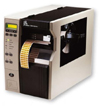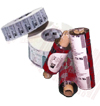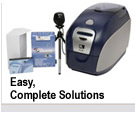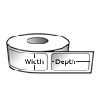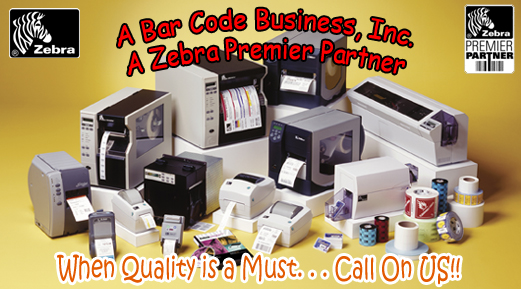A Bar Code Business, Inc.
A Bar Code Business, Inc. is recognized by Zebra as a Certified Premier Supplies Partner, due to our 20-years of industry experience & extensive knowledge of labeling requirements, allowing us to provide customers with a labeling solution that meets their demands and functions. Our ability to match the appropriate face sheet and the specific ribbon required for any Zebra printer is the key to your labeling success. True Customer Service & Support is the company’s highest priority. Free Pre-Sale & Post-Sale Technical Assistance is provided to each customer. Rely on our company’s expertise to keep your printing system working effectively.
Where you purchase your labeling supplies is as important as what you buy.
Make sure your getting the best in service & support for your dollar.
Call 800-644-0077
Bar Coding is an automatic identification (Auto ID) technology that streamlines identification and data collection. With some of its first concepts developed in the mid 1930s, bar coding has since grown into a $3.3-billion worldwide, multi-industry technology that is forecasted to grow annually by as much as 20% through the end of the century. Bar coding's early roots in the 1940s seriously expanded to the retail marketplace in the late 1960s, with efforts to develop a standard for automating supermarket point-of-sale. By 1972, RCA developed a bull's-eye symbol and scanner that operated in a Kroger store in Cincinnati, Ohio. Revisions and developments gathered from this initial test site led to the development and adoption of the UPC (Universal Product Code) symbol as the industry standard for grocery stores in the United States on April 3, 1973.
The early industrial applications of bar coding can be traced back to the early 1960s, where Westinghouse Air Brake filed a patent describing a bar code attached to a railroad car. By 1974, 95% of all U.S. freight cars had been labeled with retroreflective bar code symbols before the poorly performing system was abandoned due to insufficient training, maintenance and equipment investments.
During the 1970s, bar coding became increasingly practical and economical with the advent of low- cost electronics (microprocessors) and lower cost lasers. While numerous companies devised their own bar code symbologies and scanning equipment, the stability of the UPC system gave rise to industrial acceptance and the need for standardization. In the early 1980s, standardization activities of bar code symbologies and specifications took place with Military Standard 11 89 for Code 39. Other standards such as ANSI Standard MHl 0.8M, UPC Shipping Container standards, and automotive Industry Action Group (AIAG) standards soon followed suit, as did specifications from other industries such as paper, aluminum, electronics, telecommunications, and furniture development.
The late 1980s brought achievements in other symbology developments, which reduced the space required by bar codes while increasing their data capacity. By the 1990s, multi-row, high capacity, two-dimensional symbologies such as PDF417 and Code One were developed.
The evolution of bar coding standards brought with it the need for greater precision, technical refinement and uniformity. Responding to this need, the trade organization of Automatic Identification Manufacturers (AIM) developed Uniform Symbol Specifications (USS) for numerous bar code symbologies which have standardized the technology throughout the world. Bar code technology is the cornerstone of the Auto ID industry, but it does not work alone. The combination of bar coding with the appropriate computer hardware, application software, training and utilization create the potential for improved performance, productivity and profitability in virtually any industry.
Benefits of Bar Coding:
Bar codes offer the simplest, most accurate, cost-effective method of data entry and collection. Compared to manual entry methods which possess an error rate of one in every 300 characters entered bar coding is virtually error-free. With less than one error per one million characters entered, bar coding offers numerous advantages over traditional, manual methods of data entry.
Bar codes can be printed at a low cost with a wide variety of printing techniques. Symbols can be scaled to suit particular requirements, can be printed at very high speeds, and can be read by a variety of readily available reading/scanning equipment. Bar codes offer exceptional security, minimize errors and offer highly successful first-time read rates. Scanning a bar code brings speed and productivity improvements, and real-time data interchange (via radio frequency scanning equipment) allows timely information to be accessed almost instantly while the data is still current. Bar codes are frequently printed with human-readable text, which allows for simultaneous automatic and human decoding.
Additionally, reduced labor costs, improved organizational productivity and profitability can be realized with the implementation and use of a bar coding system. Any process or procedure that involves manual entry can be made faster and more accurate by using bar codes.
SUMMARY:
-
Accurate data collection
-
Faster data entry
-
Real-time collection and dissemination of data
-
More effective use of human and physical resources
-
Elimination of manual data entry/retrieval systems
Bar codes typically employ a parallel arrangement of varying-width bars and spaces, arranged in a particular pattern to incorporate data. Both the black bars and white spaces in bar code symbols are used to enter and decode data. While some bar codes use the bar height and/or diameter to incorporate data, linear symbologies are the most common form of bar codes in use today.

A Bar Code Business, Inc.
505 Sunbelt Road, Suite 8
The Villages, FL 32159-5686
(800) 644-0077
(352) 750-0077
FAX: (352) 750-0088

